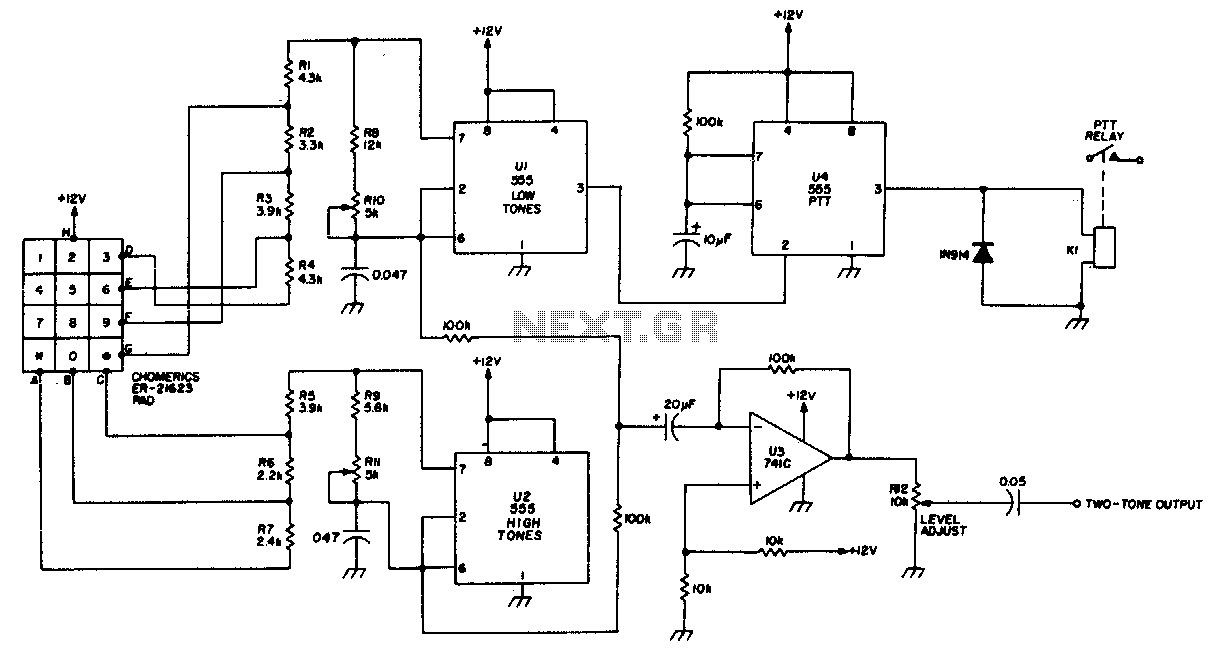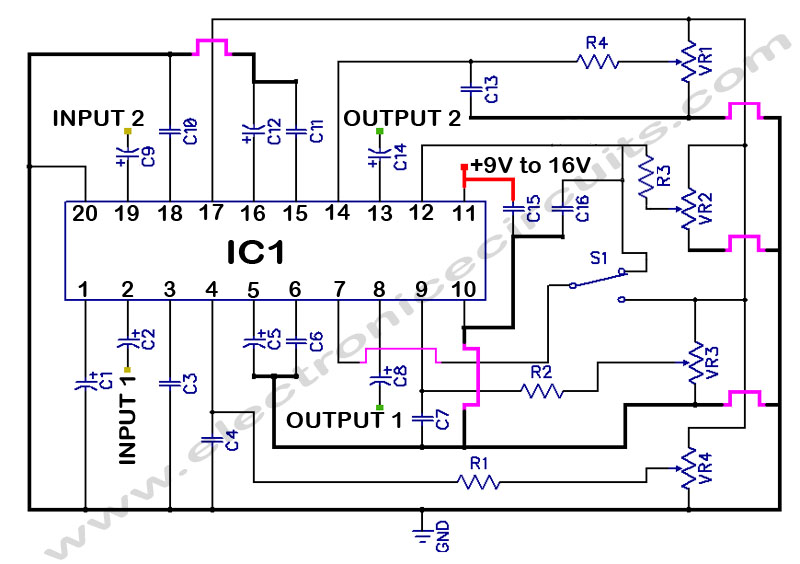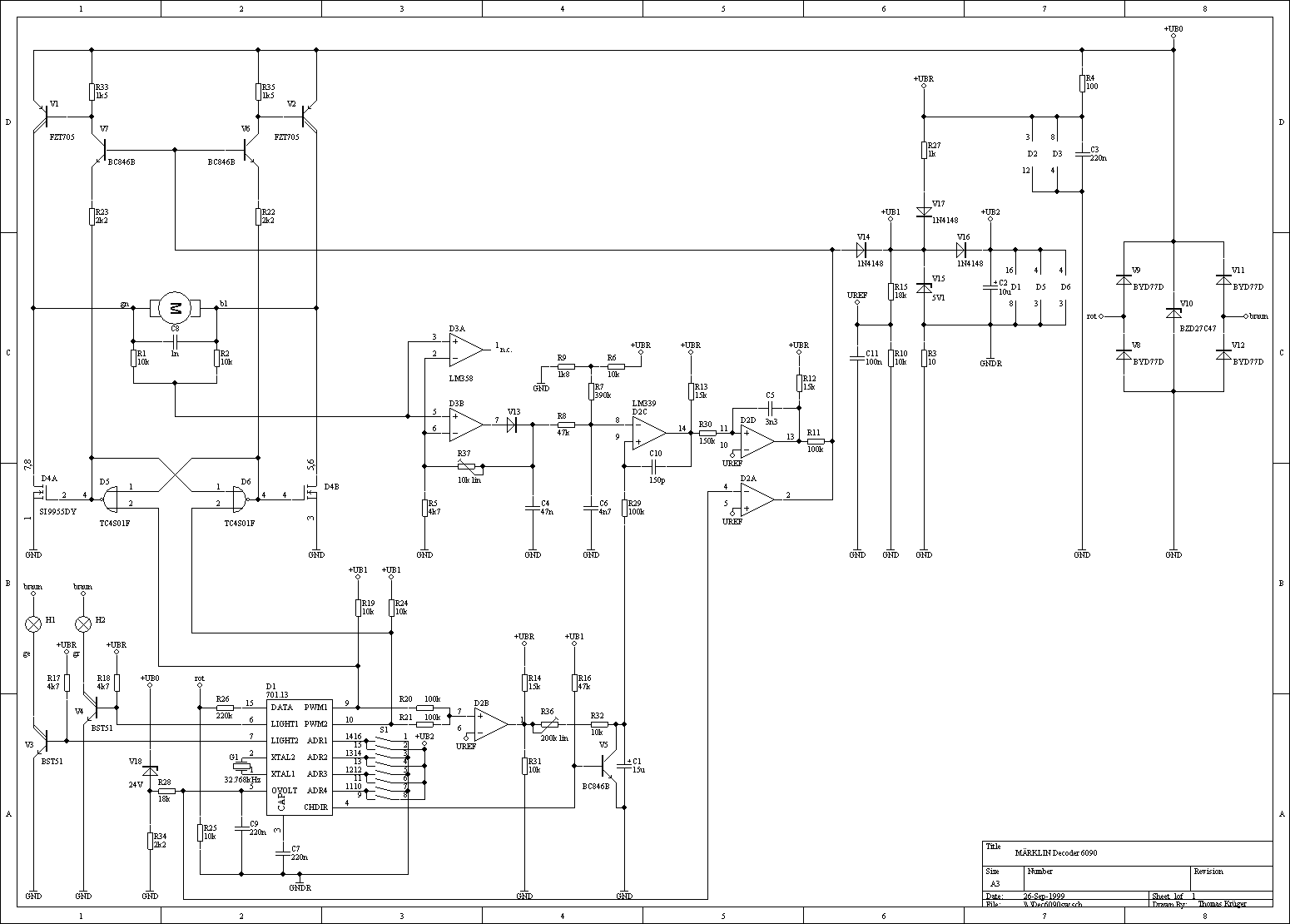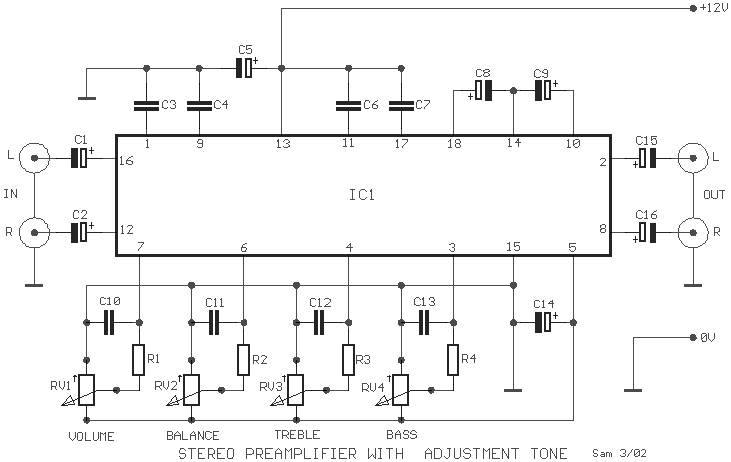
DTMF Tone Decoder
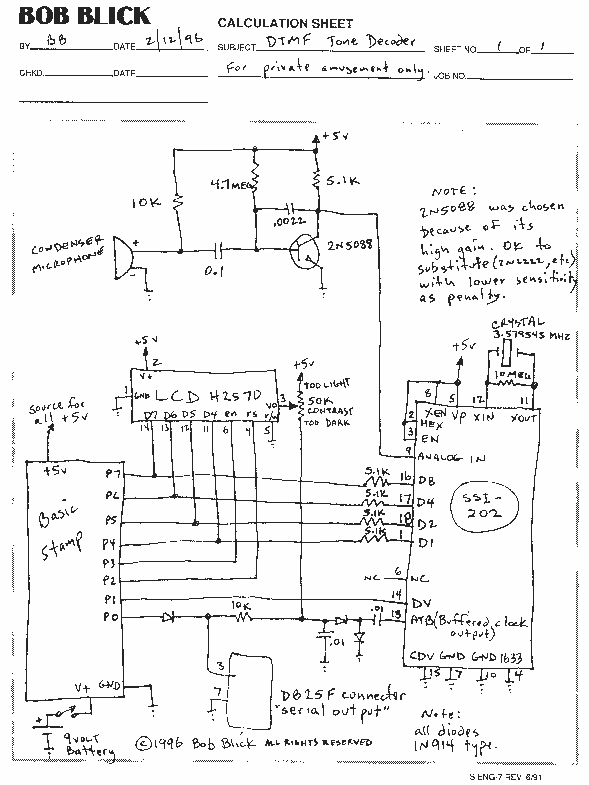
This project displays telephone numbers decoded from tones. A microphone picks up the tones, a preamplifier boosts the signals, an SSI-202 DTMF chip decodes the tones, a Basic Stamp acts as an interface to an LCD display and also provides "RS-232" serial output. If you'd like to build your own tone decoder "from scratch", read on: You might have trouble finding the SSI-202 chip, even though Radio Shack used to sell them. In the United States, the best place to buy them in small quantities is B.G. Micro, www.bgmicro.com. They have the SSI-202 chip for $2.25. If you have access to Mitel 8870 DTMF chips, you could use it in this circuit if you change the pins to match the corresponding functions. I have not done it, so I can't help you.
This electronic project revolves around the decoding of Dual-Tone Multi-Frequency (DTMF) signals, commonly used in telephone systems for dialing numbers. The design initiates with a microphone that captures audio tones generated when a user presses keys on a telephone keypad. The audio signals are typically weak, necessitating amplification. Therefore, a preamplifier circuit is employed to enhance the microphone's output signal to a usable level.
The amplified signal is then fed into the SSI-202 DTMF decoder chip. This integrated circuit is specifically designed to interpret the dual-tone signals and convert them into a binary representation of the corresponding digits. The SSI-202 chip operates by detecting the specific frequencies associated with each key on the telephone keypad, providing a reliable method for decoding the tones.
To facilitate user interaction and display the decoded numbers, a Basic Stamp microcontroller is integrated into the circuit. This microcontroller serves as an intermediary between the DTMF decoder and the output display. It processes the digital signals from the SSI-202 and formats them for presentation on an LCD screen. Additionally, the Basic Stamp provides an RS-232 serial output, allowing for communication with other devices or systems, which can be useful for logging or further processing the decoded information.
For those interested in constructing this project, sourcing the SSI-202 chip may pose a challenge as it is not widely available. However, it can be purchased from suppliers such as B.G. Micro. Alternatively, the Mitel 8870 DTMF chip can be used as a substitute, provided that the pin configuration is adapted to match the necessary functions in the circuit.
In summary, this project exemplifies a practical application of DTMF technology, combining audio signal processing, microcontroller interfacing, and display technologies to create a functional tone decoder system.This project displays telephone numbers decoded from tones. A microphone picks up the tones, a preamplifier boosts the signals, an SSI-202 DTMF chip decodes the tones, a Basic Stamp acts as an interface to an LCD display and also provides "RS-232" serial output. If you`d like to build your own tone decoder "from scratch", read on: You might have trouble finding the SSI-202 chip, even though Radio Shack used to sell them.
In the United States, the best place to buy them in small quantities is B.G. Micro, www.bgmicro.com. They have the SSI-202 chip for $2.25. If you have access to Mitel 8870 DTMF chips, you could use it in this circuit if you change the pins to match the corresponding functions. I have not done it, so I cant help you. 🔗 External reference
This electronic project revolves around the decoding of Dual-Tone Multi-Frequency (DTMF) signals, commonly used in telephone systems for dialing numbers. The design initiates with a microphone that captures audio tones generated when a user presses keys on a telephone keypad. The audio signals are typically weak, necessitating amplification. Therefore, a preamplifier circuit is employed to enhance the microphone's output signal to a usable level.
The amplified signal is then fed into the SSI-202 DTMF decoder chip. This integrated circuit is specifically designed to interpret the dual-tone signals and convert them into a binary representation of the corresponding digits. The SSI-202 chip operates by detecting the specific frequencies associated with each key on the telephone keypad, providing a reliable method for decoding the tones.
To facilitate user interaction and display the decoded numbers, a Basic Stamp microcontroller is integrated into the circuit. This microcontroller serves as an intermediary between the DTMF decoder and the output display. It processes the digital signals from the SSI-202 and formats them for presentation on an LCD screen. Additionally, the Basic Stamp provides an RS-232 serial output, allowing for communication with other devices or systems, which can be useful for logging or further processing the decoded information.
For those interested in constructing this project, sourcing the SSI-202 chip may pose a challenge as it is not widely available. However, it can be purchased from suppliers such as B.G. Micro. Alternatively, the Mitel 8870 DTMF chip can be used as a substitute, provided that the pin configuration is adapted to match the necessary functions in the circuit.
In summary, this project exemplifies a practical application of DTMF technology, combining audio signal processing, microcontroller interfacing, and display technologies to create a functional tone decoder system.This project displays telephone numbers decoded from tones. A microphone picks up the tones, a preamplifier boosts the signals, an SSI-202 DTMF chip decodes the tones, a Basic Stamp acts as an interface to an LCD display and also provides "RS-232" serial output. If you`d like to build your own tone decoder "from scratch", read on: You might have trouble finding the SSI-202 chip, even though Radio Shack used to sell them.
In the United States, the best place to buy them in small quantities is B.G. Micro, www.bgmicro.com. They have the SSI-202 chip for $2.25. If you have access to Mitel 8870 DTMF chips, you could use it in this circuit if you change the pins to match the corresponding functions. I have not done it, so I cant help you. 🔗 External reference
